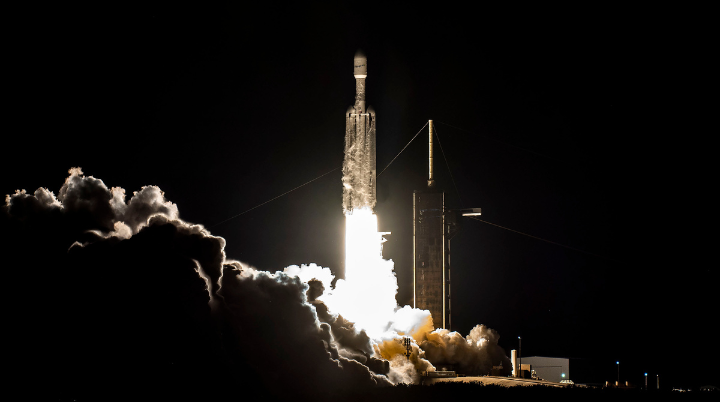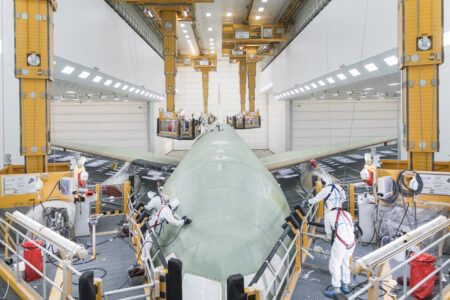ViaSat a global communications company, launched its ViaSat-3 Americas aboard a SpaceX Falcon Heavy from Launch Complex 39A (LC-39A) at NASA’s Kennedy Space Center in Florida. Approximately four hours and thirty two minutes after liftoff, the satellite separated from the launch vehicle.
First signals from the satellite were acquired approximately 15 minutes later through a ground station in South Korea. ViaSat-3 says it will soon deploy its solar arrays and drift to its final orbital location. Viasat expects it will take less than three weeks for ViaSat-3 to reach its final orbital destination, located at 88.9° west longitude.
Mark Dankberg, Viasat’s chairman and CEO commented, “Today’s successful launch of ViaSat-3 Americas opens a new chapter in Viasat’s growth. This first Americas satellite will multiply our available bandwidth, and enable faster speeds and more coverage – especially for our mobility customers.”
The ViaSat-3 class of Ka-band satellites are capable of delivering over 1 Terabit per second (Tbps) of throughput capacity each, with dynamic flexibility to move and concentrate that capacity where it’s most needed – whether it’s on land, in the ocean or in the air.
The first two satellites are planned to focus on the Americas and on EMEA, respectively, and the ViaSat-3 EMEA satellite is now in environmental testing in Boeing’s El Segundo, California factory.
The third ViaSat-3 satellite has completed final payload integration and testing at Viasat’s Tempe, Arizona facility and will focus on the Asia Pacific region, completing Viasat’s global service coverage. Dankberg added, “It’s not just a new satellite, it’s a new way to build broadband satellites. Thanks so much to all our people, and our partners, for their commitment and dedication to getting this done.”





